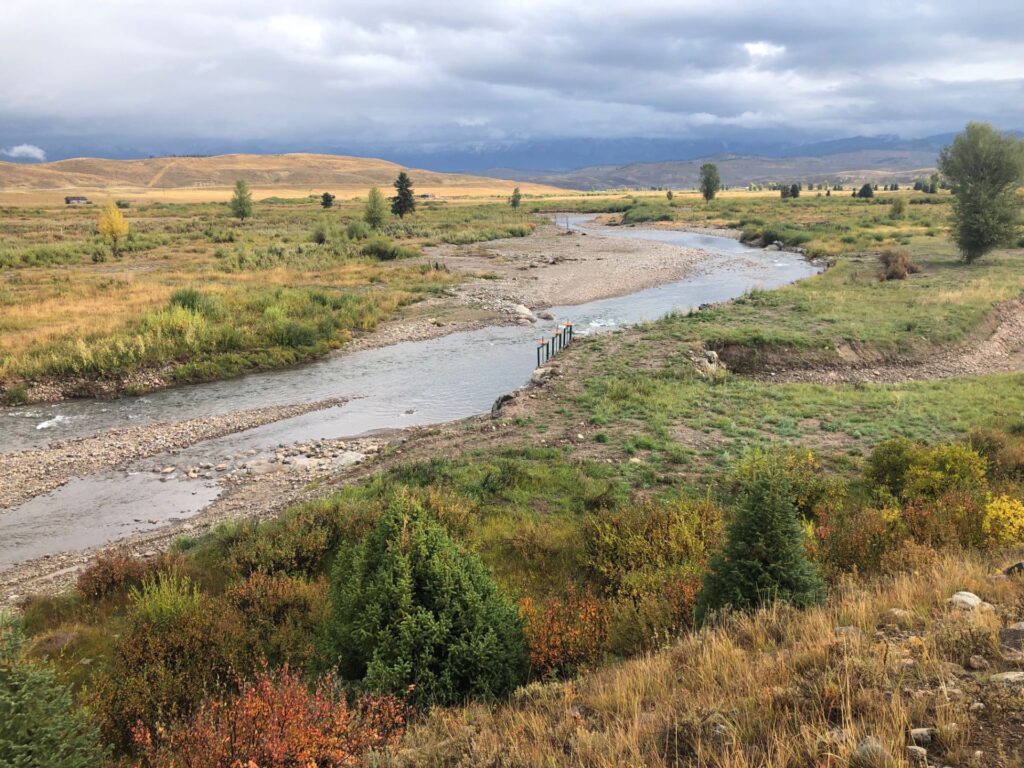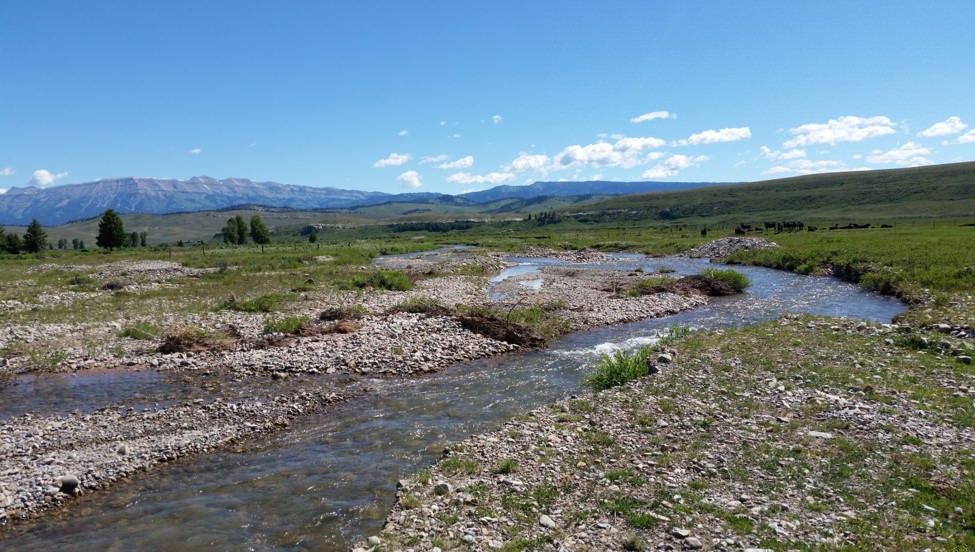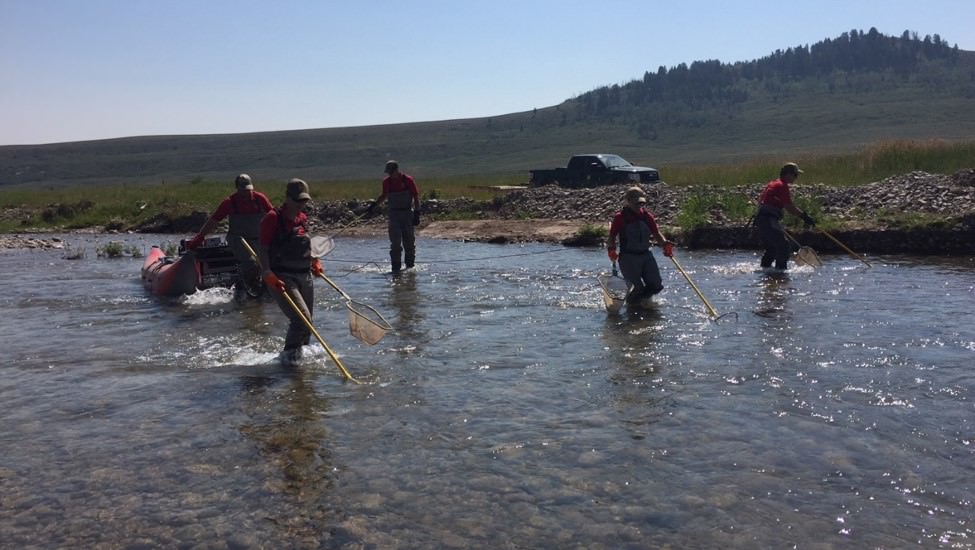
The River Bend Ranch Irrigation and Fish Passage Improvement Project is a collaborative project to improve irrigation infrastructure, bank and channel stability, sediment transport, and habitat and passage for Snake River Cutthroat Trout on the Upper Hoback River outside of Bondurant, Wyoming. The project is located on a working cattle ranch and the site of the Wyoming Game and Fish Department’s (WGFD) McNeel elk feedground that is protected by a Jackson Hole Land Trust conservation easement. Habitat degradation as a result of instream disturbances from two gravel push-up dams for irrigation in the project area were addressed through the project’s first phase (completed in fall 2018 / spring 2019) by installing a single fish passage-friendly rock diversion and headgate structure at a stable location. These improvements benefited fish habitat, fish passage, stream stability, and agricultural operations. Project partners are now working on Phase 2 of the project, which will restore stream stability and increase habitat quality through floodplain restoration.

The upper Hoback River on the River Bend Ranch is a highly unstable channel that threatens feedground, irrigation, and cattle ranching operations, and reduces instream and riparian habitat function for native fish and riparian-dependent wildlife. This site has a history of willow removal, heavy ungulate browse pressure, riparian cattle grazing, flood control through dykes and ditches, and flood irrigation through the use of gravel push-up dams, which have collectively contributed to the high levels of bank and channel instability evidenced throughout the property.
This project’s first phase addressed the impacts of the gravel push-up dams through a series of irrigation system improvements. Push-up dams divert water through the use of excavators in the stream bed multiple times a year, which causes great impacts, including bank erosion, loss of land, stream channel abandonment and downcutting especially in a system like the upper Hoback that has little to no woody riparian vegetation holding its banks together. In addition, push-up dams degrade habitat for native fish and have the potential to impede fish passage seasonally and during low water years. Improving the irrigation infrastructure in the project area and eliminating the need for annual stream manipulations have therefore benefited the ranch and feedground operations, stream stability, fish habitat, and fish passage.
The Hoback River is a major tributary of the Snake River with fifty-three stream miles within the National Wild and Scenic Rivers System. It is an important, wild, native, genetically pure Snake River cutthroat trout fishery. Improving habitat quality on the River Bend Ranch property will benefit this public fishery through increasing spawning activity and reducing erosion so that less sediment is carried downstream and deposited on redds or in pools. In addition, the installation of the fish passage-friendly diversion structures has ensured that the upper areas of the Hoback upstream of the project area will be more accessible to migratory native cutthroat trout.
The project’s second phase, currently being planned, will seek to address channel and bank instability in the 2.5 mile reach from the Phase 1 project area downstream to the highway bridge using floodplain restoration techniques. The project area is located adjacent to and intermixed with publicly-accessible USFS lands.

Project partners to date include the Wyoming Game and Fish Department, Bridger-Teton National Forest, Jackson Hole Trout Unlimited, River Bend Ranch, Rocky Mountain Elk Foundation, Sublette County Conservation District, US Fish and Wildlife Service, Wyoming Landscape Conservation Initiative, Wyoming Water Development Commission, and Wyoming Wildlife and Natural Resources Trust.